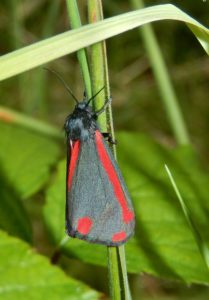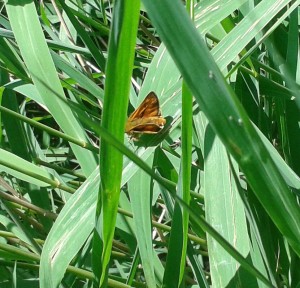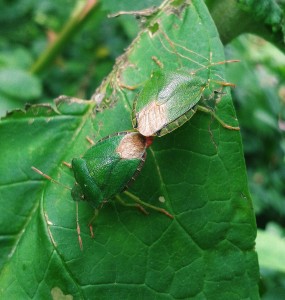The day looked unpromising for a nature walk, let alone a butterfly transect, but it was time to do one, so after a cursory tour to clip the worst of the brambles from the paths, we set off with clipboard and cameras to see what we could find.
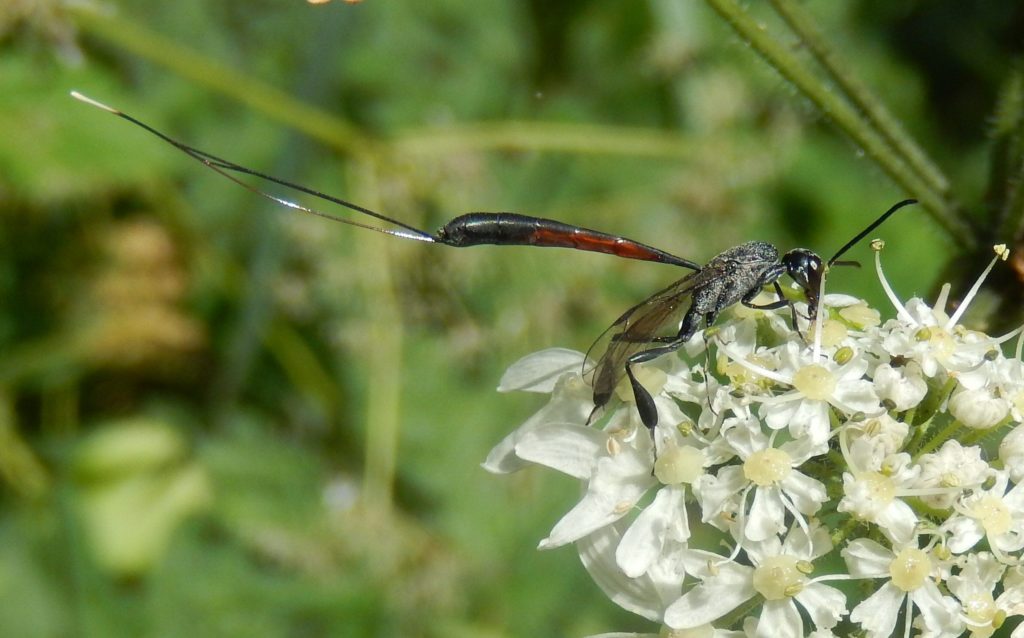
The hogweed, still in flower despite weeks of rainy weather that has caused many stalks to topple, was alive with flower beetles, bees large and small, and this magnificent Ichneumon wasp with its incredible ovipositor.
At first we saw only white butterflies, but a Comma was sunning itself, and a Speckled Wood had somehow survived the wet weather.
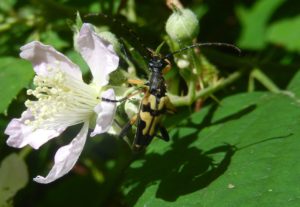
We saw two Strangalia maculata longhorn beetles taking nectar. They are Batesian mimics of wasps, looking in all truth only very slightly waspish, but perhaps young birds are put off. Or perhaps they do in fact taste foul.
We were just discussing the Sparrowhawks as we approached their nest tree when a commotion broke out along a branch, and a Sparrowhawk flew rapidly with its claws forward: a Squirrel raced away from the nest, hotly pursued by the angry bird; they leaped to the neighbouring tree and scurried up the matching branch out of sight. The Sparrowhawk broke into a loud excited chittering trill. We were all excited, laughing at the speed, the impossibility of reaching for a camera.
A Holly Blue flew over the pond, above several pairs of mating Azure Damselflies and a Yellow Iris now chewed right down to a semi-leafless state by the Iris Sawfly larvae.
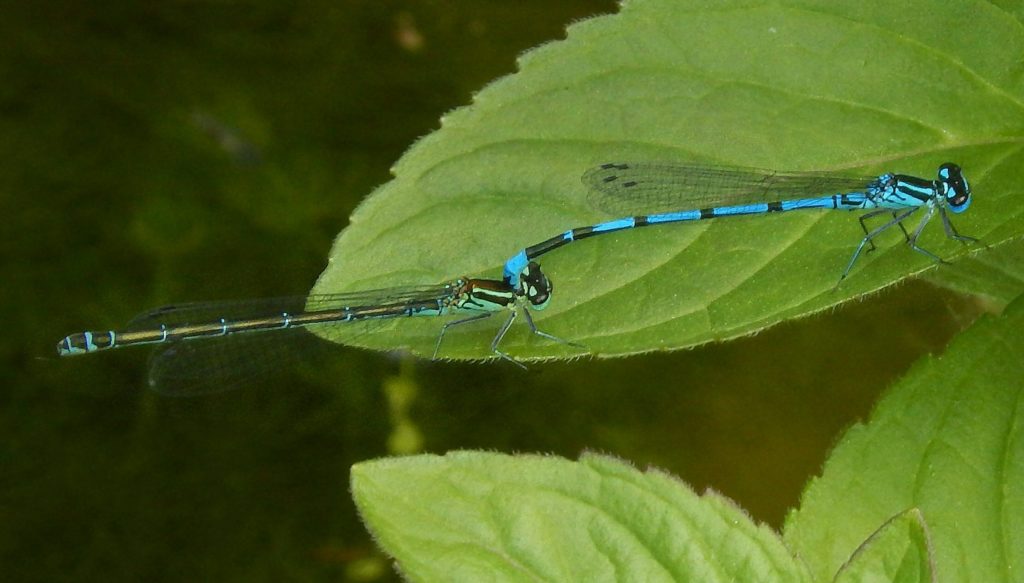
Down at the Anthill Meadow, a single Small Skipper perched on an ear of Yorkshire Fog.
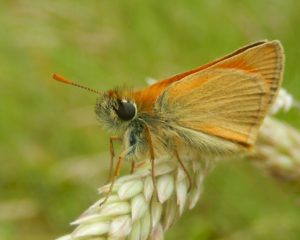
On the next ear was a male Bluetail Damselfly: they have emerged from the pond in the past week.
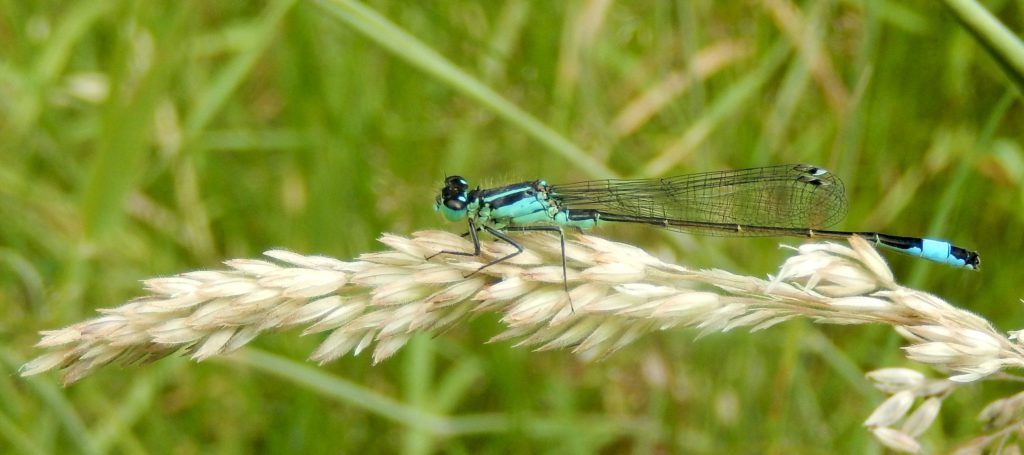
The wooden rail was sticky with snail pulp: a Song Thrush had hammered three snails open on the exposed woodwork, leaving shells and sticky patches behind.

Two days ago I saw a Cinnabar moth in the Small Meadow. There is plenty of Ragwort coming up, so with any luck there will be plenty of caterpillars soon.
